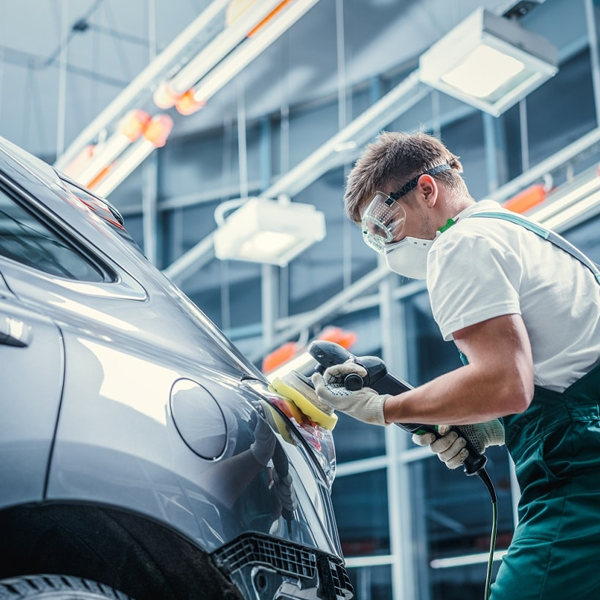Collision Repair 101: Navigating the Road to Restoration
My name is Car. Let me tell you a story about something that happened to me the other day. It was an incident I will never forget. As I was travelling along the highway, I could feel the hum of my engine course through me. The world outside whizzed by in a blur of colours and shapes. Then, a sudden jolt shattered my reverie. I shuddered as the impact reverberated through me. In that fleeting moment, time seemed to freeze. I had barely enough time to notice a fellow car before our worlds collided, metal against metal. Do you know how I survived that to tell you the story? Collision repair.
If vehicles could speak, this would be a tale told by millions of automobiles worldwide. Read on to unravel the magic of collision repair.
Aftermath of a Collision
Vehicles, despite their robust design and advanced safety features, are susceptible to a variety of collision damage that can range from minor to severe. Understanding these types of damage is critical for recognizing the intricacies of collision repair and the critical components that require careful restoration.
Minor Cosmetic Damage
These superficial damages include scratches, scuffs, and small dents that affect the vehicle's appearance but often do not compromise its functionality. While cosmetic damage is not critical to the car's performance, it can reduce its aesthetic value and potentially lead to issues like corrosion if left untreated.
Structural damage
This refers to damage to the vehicle's frame or chassis, which affects the vehicle's overall structural integrity. Crumpled or bent frames might jeopardize vehicle safety, suspension alignment, and drivability. Structural repairs are crucial to ensure that the car can maintain proper alignment and can withstand future collisions.
Mechanical Damage
Collisions can cause mechanical damage, affecting components like the engine, transmission, and drivetrain. Even minor collisions can cause important mechanical systems to fail, resulting in diminished efficiency, performance, and potentially dangerous operation. Collision repair helps to discover and rectify mechanical faults.
Electrical Damage
Modern vehicles rely significantly on complicated electrical systems for various functions, from lighting to advanced driver-assistance features. Collisions can damage wiring, sensors, and control modules, leading to malfunctions or full failure. Skilled collision repair technicians utilize specialized diagnostic instruments to discover electrical issues and ensure appropriate repair and calibration.
Damage to Safety Systems
Many automobiles have sophisticated safety systems such as airbags, sensors, and collision avoidance technologies. In the event of a collision, various safety systems may deploy or sustain damage. During collision repair, these components require replacement and recalibration to ensure they function correctly in the event of future accidents.
Collision Repair – A Detailed Look
The collision repair process is a multi-step journey that aims to restore a damaged vehicle to its pre-accident condition, ensuring both safety and aesthetics.
Initial Assessment and Documentation
• When a damaged car arrives at a collision repair facility, it undergoes an initial examination. Technicians examine the exterior, interior, mechanical systems, and structural components of the vehicle.
• The amount of the damage is noted, and an estimate for repair costs and labour hours required is calculated.
Disassembly and Additional Inspection
• If the initial evaluation finds hidden damage or potential problems, the vehicle may be dismantled in parts. This enables specialists to analyze any damaged components beneath the surface.
Structural Repair and Alignment
• When a vehicle has structural damage, the frame or unibody structure is restored with specialist techniques and equipment.
• Frame alignment ensures that the dimensions of the vehicle match manufacturer specifications, which is critical for safe operation and handling.
Body Repair and Restoration
• Depending on the severity of the damage, collision repair professionals will either repair or replace the damaged body panels.
• To repair the vehicle's shape and integrity, skilled specialists use processes such as welding, metalworking, and bonding.
Mechanical and Electrical Repairs
• Mechanical and electrical repairs include inspecting mechanical components such as the engine, gearbox, suspension, and drivetrain for damage.
• To maintain optimal functionality, electrical systems, including wiring, sensors, and control modules, are checked and repaired.
Other processes include painting, reassembly and alignment, quality control checks and final delivery.
Collision Repair Does Not Cost a Bomb!
Many vehicle owners are concerned about collision repair expenses, but it's important to know that affordable options exist even without insurance coverage. Several factors influence the cost of collision repair:
Independent Collision Repair Shops: Independent repair shops often provide competitive rates. They have highly trained specialists who can perform high-quality repairs at very affordable rates.
Estimated costs: Reputable repair firms provide detailed cost estimates in advance. This transparency enables you to understand anticipated costs and make informed decisions.
Payment Plans: Some repair companies have flexible payment plans that allow you to stretch the cost of repairs out over time, making it more reasonable for your budget.
Used and Aftermarket Parts: Depending on the extent of damage, used or aftermarket parts might be a more affordable alternative to brand-new OEM parts, without compromising on quality.
Discuss Options with the Shop: When you communicate openly with the collision repair shop, they may suggest alternative solutions or strategies to reduce costs while ensuring your vehicle's safety and functionality.
Conclusion
Collision repair is a crucial phase in the life of a vehicle. From the initial shock of impact to the meticulous craftsmanship that mends and revitalizes, the process is a testament to human ingenuity and resilience.
Collision repair exemplifies the convergence of art and science, as expert technicians breathe new life into damaged vehicles, restoring both form and function. These professionals guide cars from chaos to glorious restoration using innovative technology, steadfast attention, and a commitment to safety.
Each restored vehicle tells a story of triumph over hardship, reflecting a collaborative effort that extends beyond repair manuals and tools. As vehicles emerge from the wreckage, they carry with them a newfound strength. They reaffirm that even after a collision, the journey continues with hope, expertise, and the artistry of renewal.


